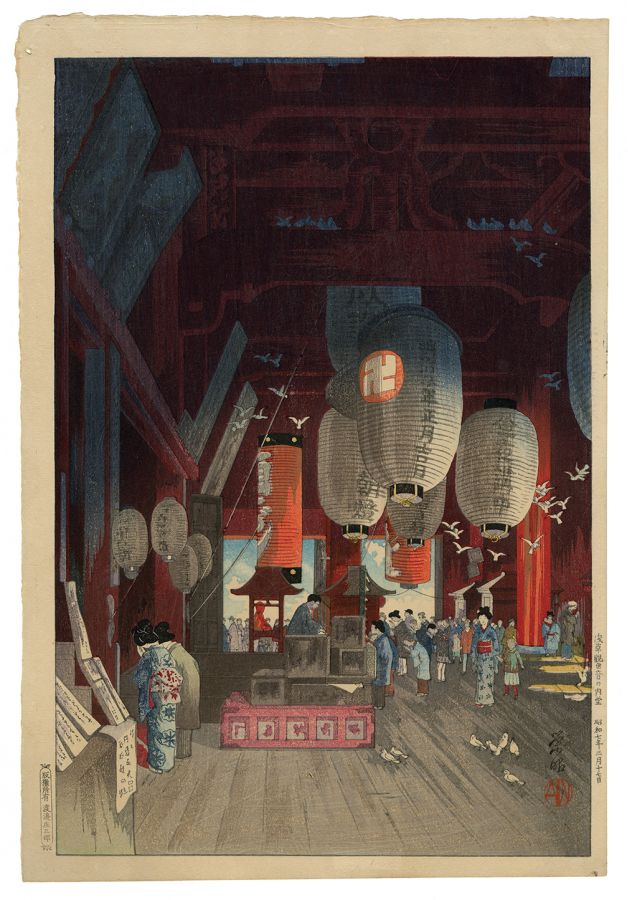Signed in black ink lower right, with the artist’s red seal beneath.
Oban yoko-e. 14 3/16 x 9 9/16 inches (360 x 243 mm); sheet size 15 1/4 x 10 1/2 inches (387 x 267 mm).
A fine impression with fresh colors; the full sheet; slight overall age toning; a drying tack hole in the top left margin, in very good condition. Published by Watanabe Shozaburo. Rare first or early edition with the publisher’s seal “C” (1929-1942) in the lower left margin; title and date in the lower right margin.
ABOUT THIS WORK
The scene depicted is of the interior of the Asakusa Kannon Temple on New Year’s Day. Large celebratory lanterns hang from the high ceiling; the one in the foreground bears a 17th-century Buddhist symbol. The Buddhist temple Sensōji, also known as Asakusa Kannon Temple, is located in Asakusa, Tokyo. Completed in 645 AD, it is Tokyo's oldest temple and one of its most colorful and popular.
Literature: Shin-Hanga: New Prints in Modern Japan, Kendall Brown, Hollis Goodall-Cristante, Los Angeles County Museum of Art, 1996, p. 83, figure 113; Japanese Wood-block Prints, Shizuya Fujikake, Japan Travel Bureau, 1938, p. 94, 95; The Legacy of Japanese Printmaking, Barry Till, Art Gallery of Greater Victoria, 1986, plate 62; Modern Japanese Prints: The Twentieth Century, Amanda T. Zehnder, Carnegie Museum of Art, 2009, p. 132; Hanga ni miru Tokyo no fukei; Kanto daishinsai kara senzen made, Ota Kuritsu Kyodo Hakubutsukan, 2002, pl. 213, p. 50.
Collections: Art Institute of Chicago, Carnegie Museum of Art, Harvard Art Museums, The Lavenberg Collection of Japanese Prints, Los Angeles County Museum of Art, Museum of Fine Arts Boston.



